Estonia? What is it? Where is it? Is it a country, a city, a football club? – That’s the sort of questions one might hear when saying they’re going to Estonia. It is not very known. Estonia’s a tiny country, rather cold and not crowded, located somewhere at the end of Europe. It looks like a dot comparing to Russia, its immense neighbor. It’s smaller than other Baltic countries too. Estonia has only a bit more than one million of residents, it has a lot of woods, though, and swamps, and islands. If you love famous tourist attractions and sizzling beaches, you’re probably discouraged by now. But if you like places that are somewhat strange, hidden and unpopular, Estonia might be a perfect destination for you. Here’s a list of 8 reasons why it’s a great country for curious backpackers.
Table of Contents
Estonia, mysterious corner of Europe
Estonia isn’t among Europe’s top tourist destinations. In fact, many people haven’t even heard much about it. Those who did often only know it exists somewhere up in the north – that’s all. People tend to confuse Estonia with its Baltic neighbors, and they would have much trouble when asked to name one Estonian city. Estonia’s a small country, and it seems to be lost on the map of Europe, but it doesn’t mean it’s uninteresting. In contrary, Estonia can be a refreshing surprise.
Because of its climate and culture, Estonia appears to be quiet, atmospheric and enigmatic. The behavior of locals adds to the overall mystery. They aren’t very social, especially when compared with Europeans from the southern parts of the continent. It doesn’t have to be considered as a flaw, though. They’re not very smiley or chatty, but they respect calmness, silence, and privacy. There is something secretive about Estonians and their country, and that only makes it more of a unique destination.
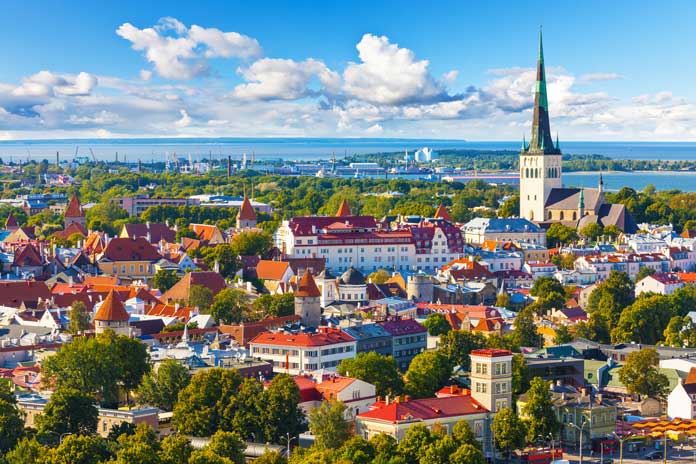 The magic of Tallinn
The magic of Tallinn
The historic center of Tallinn looks like a theater scenography. The old town dates back to 15th and 16th century. Medieval buildings are wonderfully preserved, so you can still feel the spirit of old times. It’s so tangible that while walking around the streets, one expects to see knights, horses, and carriages. As fantastic as it seems, it’s possible. There are some restaurants with middle ages themed interiors and street markets where traditional snacks are being sold by clerks wearing historical costumes. Nevertheless, not everything in Tallinn is old. It’s also a modern capital city with bustling shopping galleries, business centers, and contemporary architecture. Modernity doesn’t dominate over the history, but it does exist in Tallinn.
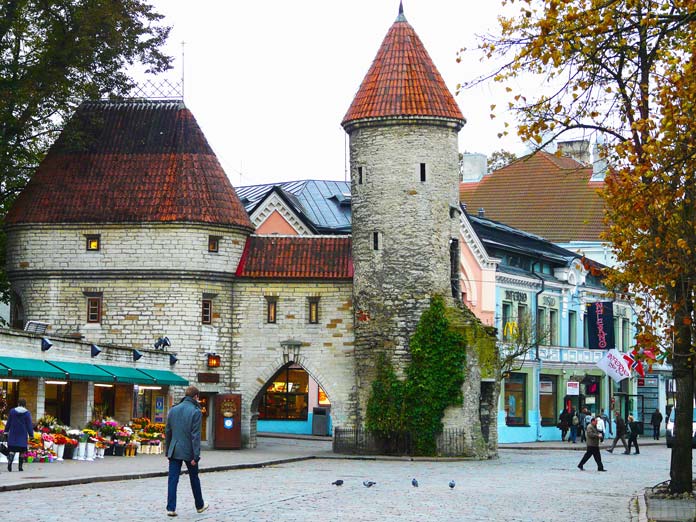 And other towns in Estonia
And other towns in Estonia
Estonian towns aren’t big, not even Tallinn can be called a large city. Despite their small size, Estonian cities have a lot to offer. Parnu is located right on the seaside, so the atmosphere there is great, especially in the summer. Viljandi is a paradise for folk music enthusiasts. There’s the famous Viljandi Folk Music Festival, during which plentiful musicians from all over the world gather in this cute little town to play music together. Tartu is a lively student center with beautiful architecture and friendly vibe. These are just examples, but Estonia has more gems to discover. All of these towns are full of wooden houses, which make them nice and cozy. In all of them, you can also find stores with traditional handicraft – Estonians love making things by themselves. Here are some more lovely Estonian towns:
Saaremaa
Visiting Kuressaare, Saaremaa’s only city feels like entering a fairy-tale in which everything’s tinier and more beautiful than in reality. When looking at the small wooden houses, beautiful streets and the castle rising up in the town’s center, one only wants to see a little princess in a flared dress stepping out from behind a corner, holding an umbrella and humming a song in the mysterious Estonian language. Yes, it’s that charming. Sadly, there are not real princesses living in the Kuressaare Castle and never were. It used to belong to the Bishopric and was built by crusaders trying to control the island. The castle now houses the Saaremaa Museum in which you can learn more about the island’s history.
After you exercise the mind in the museum and feel like to do something for your body, Kuressaare offers many treatments in its famous spas. Outside of the town, Saaremaa is mostly covered with woods and fields, with some villages occurring here and there. It’s an excellent place for nature-lovers, those who enjoy moving around by bike in particular – flat land, streets that are nearly empty and fresh air makes cycling very easy and pleasant. Loode Oak Forest is one of the worth visiting places, as well as the windmills in Angla and Kaali meteorite craters.
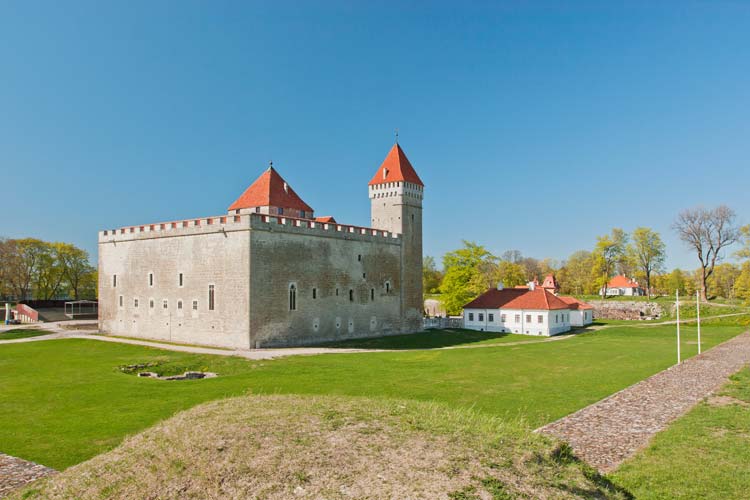
Tartu
Tartu is the second largest town in Estonia. Students are a big part of the population, so their influence on the city is very apparent. Vibrant nightlife is taking place in pubs and clubs located in old buildings; giddily exuberant groups of students consistently walk around the streets heading from one spot to another. Even though Tartu is the oldest city in Estonia, dating back to 11th century, its spirit is fresh and youthful. The pretty old town, historic churches, and theaters, old bridges, and ruins make a lovely background for the city’s vivid life, without overwhelming it. During your stay in Tartu, you should definitely go out in the evening. If you’re not fond of clubbing, search for a cozy pub or café, there are plenty of them as well.
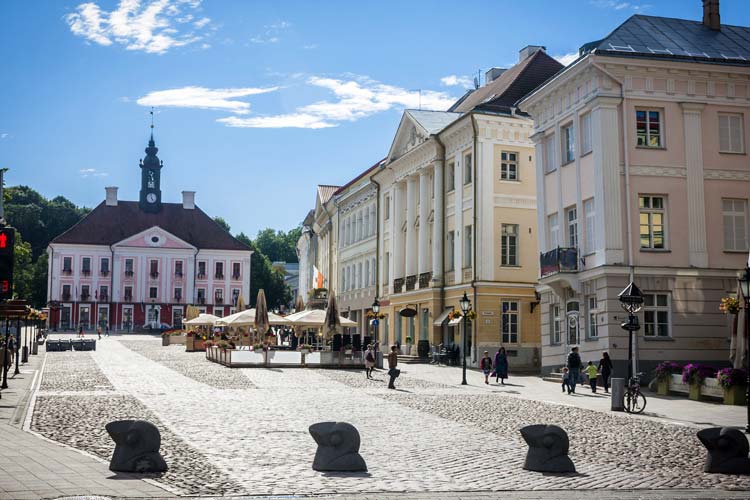
Viljandi
Known mostly as a folk capital, Viljandi is indeed a place where Estonian traditions have been preserved very well. If you visit Estonia in the summer, consider joining the Viljandi Folk Music Festival. The huge gathering of musicians, hippies, free souls and other spirits birds is Viljandi’s highlight. Especially for those belonging to one of the groups listed above or those who simply love music. In case you miss the festival, try to attend a concert in the Viljandi Folk Centre. Events are being often held, and they’re usually interesting.
Once in a while, the center even organizes folk discos! Students of the Viljandi Culture Academy make an active, artsy community, so there are also some events hosted by the university. Besides of singing, dancing and watching performances, you can also explore the town’s historic sites, such as the picturesque ruins of the Viljandi Order Castle. The ruins are scenically located on a hill overlooking the Viljandi Lake. Park leading to the castle, with its famous rope bridge and lots of greenery, is a perfect place to stroll about.
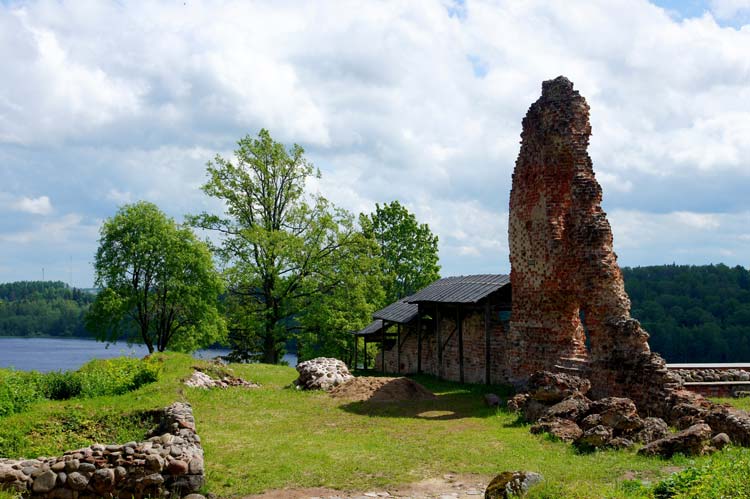
Pärnu
As Estonia’s major seaside resort, Pärnu is a summer paradise for all Estonians who have spent a whole year waiting for a swim in the sea. Unfortunately, not always they get as much of the summer as they’ve expected because the weather in Estonia is very temperamental and has a tendency to change often according to its own whims. Yet there’s no rain, no temperature low enough to scare an Estonian (or a Fin, because the majority of Pärnu’s visitors consists of “local tourists” and Finnish holidaymakers). Pärnu proves you can have a sunbath even when it’s not sunny. What you need are only the right attitude and hot atmosphere. Besides of the beach and its promenade, Pärnu also offers a few nice parks, gorgeous wooden villas, historic sites, and spas.
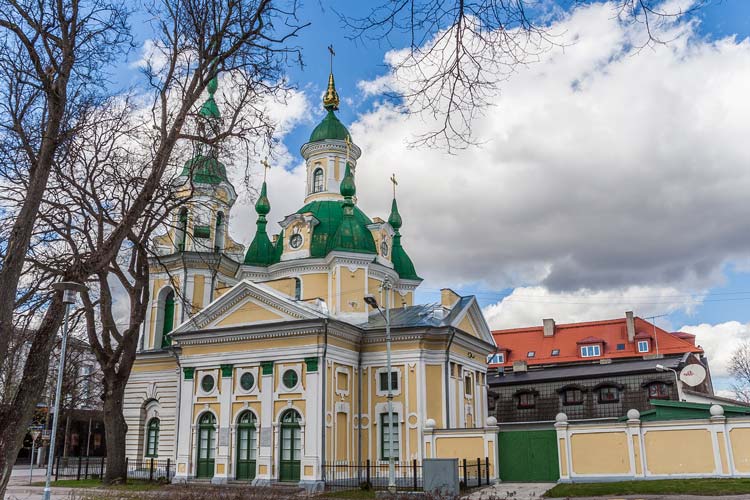 The enigmatic nature
The enigmatic nature
Distances between cities are relatively big and filled with woods, fields or swamps. Estonian nature has a very distinct character. The country’s flat, so mountain-lovers won’t find it very attractive. The sea is quite cold, so beach lovers could also be disappointed (unless they go to Estonia in the middle of the summer and are lucky enough to experience good weather). Sounds boring? Well, Estonian nature isn’t exactly striking, but it’s not dull either. Its beauty is simple and modest. If you’re looking for high peaks, impressing waterfalls, dark caves or tropical plants – there are places out there that would suit you way better than Estonia. If you love mysterious woods, old trees, swamps, and lakes, you will inevitably fall in love with Estonian nature.
Soomaa National Park
The park protects 390 square kilometers of wetlands, including floodplain grasslands, raised bogs, rivers, and purified forests. Depending on what time of the year you choose to visit Soomaa, you see something entirely different. What makes it even more attractive, Soomaa has 5 seasons, not 4 like the rest of Estonia. During the spring flood, the water level rises significantly, and everything’s flooded, even the roads. It’s green and lovely during the spring and summer, gold in the autumn, and moon-like in the winter. Moving around by foot is one option (in the winter you need snowshoes that make you walk like a robot), but you can also use a canoe. Soomaa shelters some adorable mammals, such as elk, wild boars, roe deer, and wolves, as well as birds, like black storks or golden eagles.
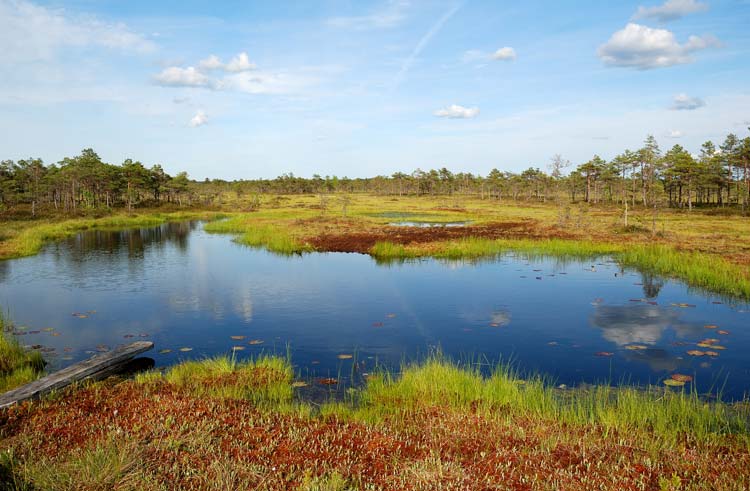
Lahemaa National Park
Lahemaa, the biggest national park in Estonia, is a misty land, covered with swamps and forests. It’s located on the seaside, so offers gorgeous, natural beaches as well. The beach villages Võsu and Käsmu make an excellent base for discovering the coast. Lahemaa is a home for several rare species of birds and mammals. Brown bears, wolves, and lynxes sneak around the woods, while mute swans gracefully move across waters’ surface. The best thing to do in the Lahemaa National Park is simply hiking, walking and paying attention to nature. As for the tourist’s basic needs, the park features a vast network of hiking and cycling, camp sites, and guest-houses.
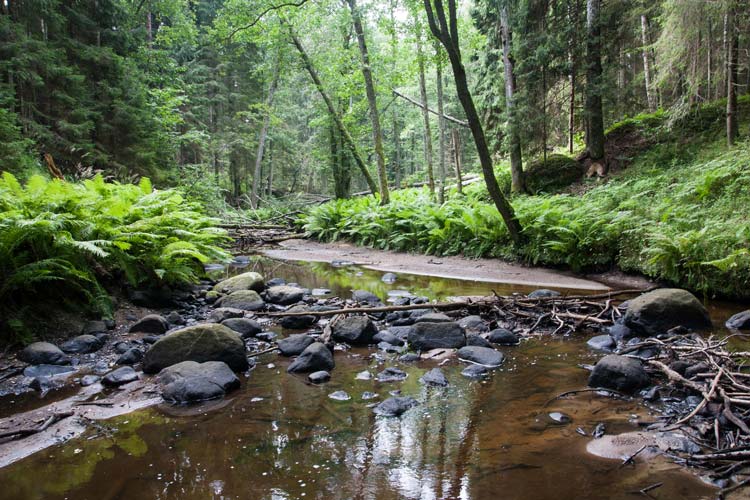 Lovely islands
Lovely islands
Estonia has over 2000 islands and islets – that’s probably one of the most surprising and unusual facts about this country. Some of them are very tiny, and you can’t even visit them, but others have quite many inhabitants. The largest one is called Saaremaa, and it’s gorgeous. Kuressaare, its capital, is a little town with cute wooden houses and cozy streets. Hiiumaa, the second largest island, is also worth visiting. It’s known mostly for the very particular culture. The locals on Hiiumaa have their customs and like to underline their uniqueness.

Hiiumaa
Hiiumaa owes its existence to the meteorite that exploded about 455 million years. Estonia’s second biggest island (by the way, Estonia has over 1500 of them!) is a perfect place for those who seek a secluded getaway. Peaceful and quiet, Hiiumaa offers an excellent possibility to relax and enjoy the rest without being disturbed. Actually, there’s not so much to do besides of cycling, walking, swimming and breathing fresh air, so if you stay in Hiiumaa, exploring the nature is an obvious thing to do.
Hiiumaa is famous for its numerous lighthouses, such as the lighthouse of Kõpu or the one in Tahkuna. There are also several churches on the island, museums, and a castle. When it comes to the accommodation options and tourist development in general, Hiiumaa doesn’t offer a wide variety, but it makes it unique in a way. There’s just enough and nothing besides that, no excess. The weather is a bit warmer than on the continent, so Hiiumaa gives you more of a chance to have a sunny day in usually cold and rainy Estonia. In the winter you can reach the island using an ice road, which is an unusual and exotic experience.
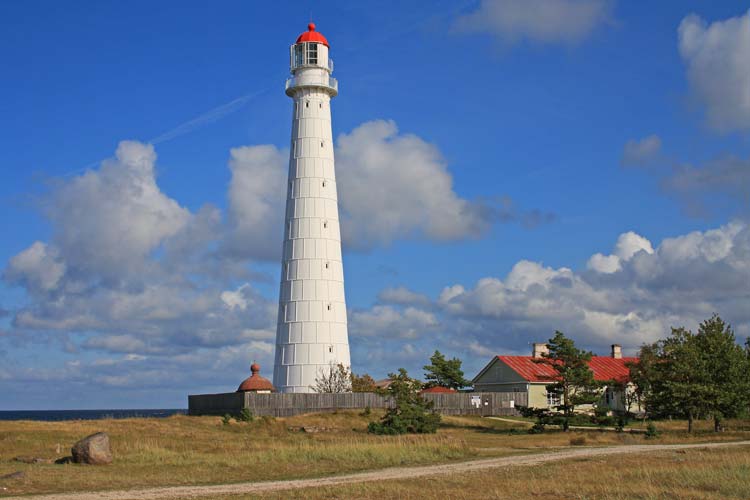 Relatively low prices
Relatively low prices
Estonia isn’t the cheapest country in Europe, but it’s affordable. You can enjoy many of its attractions without spending a fortune. As for accommodations, some backpacker hostels are offering low prices. You can get a bed in a dorm for about 10-12 Euros. Food isn’t expensive either. Having a good dinner for a couple of Euros is possible. If you’re a party animal, you’ll appreciate Estonian bars and their prices – you can easily party all night long without emptying your wallet.
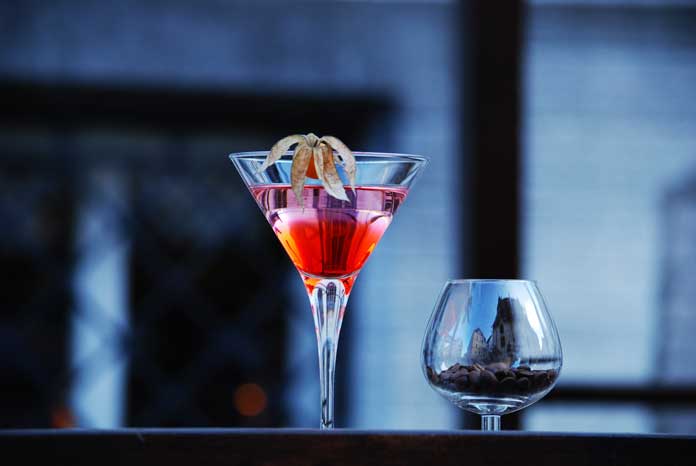 Sauna!
Sauna!
Last but not least – sauna, the most important part of Estonian culture. Well, “the most important” sounds very pathetic, but… it is a crucial part of Estonian lifestyle. Nearly everyone who owns a house has a sauna. All sorts of parties take place there. Estonians love meeting up in saunas, chatting, sipping beer, enjoying the warmth and, from time to time, jumping into snow or taking a dip in a cold lake. Once you get to Estonia, you should try it!

Are you convinced Estonia is a backpacker-friendly country? Would you like to visit it? Let us know; we’d love to hear your view! And don’t forget to share this article with your friends.



